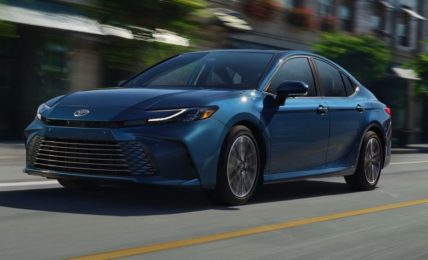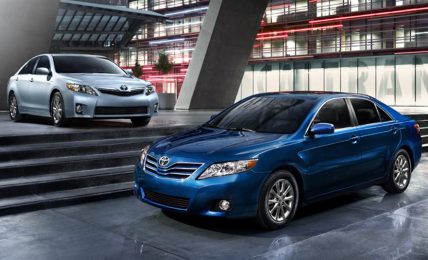The hybrid powertrain pulls nicely and offers interrupted power delivery
Performance – The Toyota Camry Hybrid shares its powertrain with the 2018 Lexus ES 300h. Meaning, it has a 2.5-litre petrol engine which comes matched to an electric motor. Yes, the previous generation Camry had a similar powertrain but Toyota has made significant changes to the engine such as a longer stroke and high compression ratio and enhanced cooling. The location of the hybrid battery has also been moved from the boot to the area under the rear seat. The powertrain produces a combined 215 HP. Like I had mentioned in the ES 300h review too, this powertrain is extremely refined, it doesn’t make any noise even when you start the car.
It is very refined and silent and goes from EV to hybrid and back without a fuss
Power delivery is also ultra smooth. The engine has a lot of kick and it doesn’t mind going all the way to the redline too. In city driving, the 10th generation Toyota Camry fares really well, with the powertrain delivering a good punch. You won’t be disappointed on the highways too, because this motor pulls very cleanly and takes you to triple digit speeds without any strain. The e-CVT gearbox works well with this powertrain, the rubber band effect isn’t felt as much as it does on conventional petrol-CVT cars and this transmission is very refined too. The Camry also gets paddle-shifters but I found little use of them.
Different driving modes work well to alter the engine’s performance
The Camry offers a good thrust of power & the hybrid powertrain is very smooth
There’s no tachometer on offer, but the older Camry’s display did throw up a tacho if you went into Sport mode. This time around, the instrument cluster display just has a change of colours when you toggle different modes. Of course, these modes do alter the driving experience too. In Normal mode, the Camry feels at ease, delivering power when you want it and cruising comfortably otherwise. Things change when you move into Sport mode when the powertrain starts feeling more responsive. It reacts very swiftly to throttle inputs and delivers power more aggressively. With the transmission shifted to S, it works in tandem with the powertrain for a more linear and quick output.
The Camry delivers a fuel efficiency in the range of 10-14 km/l
There’s an Eco mode too, which makes the Camry feel a bit laid back and you can use it if you’re going to be driving on a really long patch of highway and don’t want to push the car much. It’ll reward you with good efficiency too. There’s a pure EV mode too, but the range is very limited. The Camry gets the 4th generation hybrid system and I really liked the smoothness with which it transitions from EV mode to hybrid mode and vice versa. With a mixed driving cycle, you can expect a fuel efficiency of about 10-14 km/l, which is pretty decent for a sedan in this segment.
The Camry fares well in comfort, but not in driving fun
Driving Dynamics – The main purpose of the Toyota Camry is to transport its passengers in utmost comfort and you bet, it does its job very nicely. The suspension has been tuned for a very plush ride, potholes or rather craters on our roads don’t bother this sedan much and in fact, it just glides over everything. The Camry feels very stable and composed throughout. Even after a really long drive in this, you won’t feel much fatigue and full marks to the suspension for that.
The Camry is an effortless mile-muncher
The steering feel is also quite sorted, light at city speeds and weighs up nicely as you increase the pace. It could’ve offered better feedback though. Body roll can be felt when you corner hard because the suspension setup is on the softer side, but compared to the last generation, the body roll is significantly lower. The brakes also work great offering a sharp bite while the tyres have good levels of grip.




